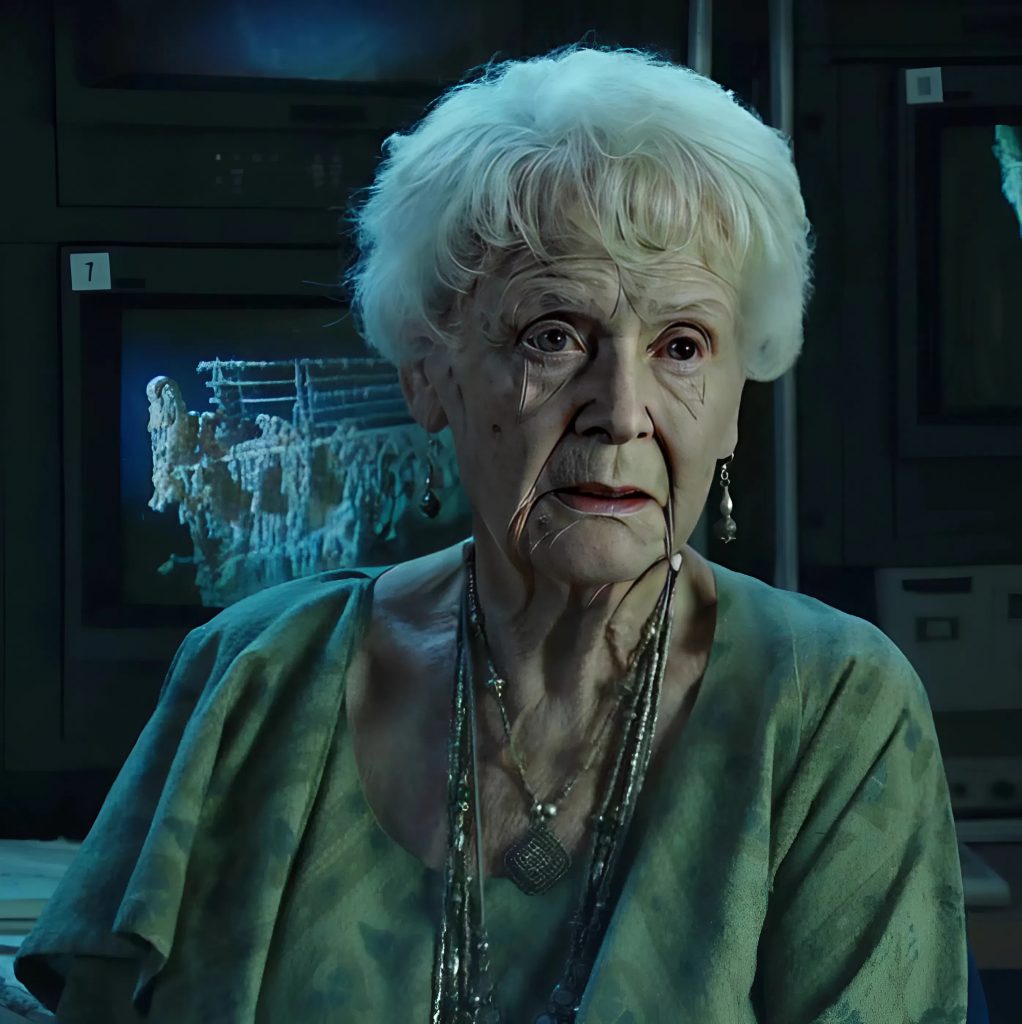Today, millions remember her as the wise, soft-spoken old Rose from the legendary film Titanic. That iconic scene where she gazes out at the sea and whispers, “It’s been 84 years…” brings tears even to the most stoic viewers. But behind that one role lies an entire lifetime—a woman whose youth was as cinematic and haunting as the love story of Jack and Rose.
The name Gloria Stuart doesn’t show up often in modern interviews or red-carpet retrospectives. And yet, once upon a time, she was Hollywood. Her face graced the covers of fashion magazines, her presence on-screen captivated audiences, and directors lined up for a chance to work with her. But just when her star was expected to soar—she disappeared.
A Beginning That Could Have Been Legendary
Born in 1910, Gloria Stuart came of age at a time when women were still fighting for a voice in the world. Even as a college student, she stood out: a rare combination of beauty, intelligence, and undeniable talent. She made her film debut in the early 1930s, and almost overnight became one of the most sought-after young actresses in Hollywood.
Her performances were elegant, poised, and powerful. She wasn’t just a pretty face—she brought depth to the screen. But the Hollywood system wasn’t ready for an actress who wouldn’t play by the rules.
The Woman Who Dared to Say «No»
While most actresses of the time were coached to smile, comply, and play the game, Gloria had other ideas. She refused roles she found degrading. She fought for better scripts. She turned down producers who treated her like decoration.
Hollywood didn’t like that.

Slowly but surely, her star began to fade—not because she lacked talent, but because she had principles. At a time when submission was rewarded, Gloria Stuart chose to walk away.
She focused on her family. She explored painting, sculpture, and political activism. While her peers aged desperately in the public eye, clinging to fame, she embraced a quiet, creative life. By the 1940s, she had all but vanished from the screen.
A Comeback Nobody Saw Coming
Decades passed. New stars rose and fell. Gloria’s name slipped from memory.
Then, in the 1990s, something remarkable happened.
James Cameron, preparing a new epic called Titanic, was searching for someone to portray the older version of Rose—a woman who had lived through love, tragedy, and time. He chose Gloria Stuart.
She was 87 years old.
In just a few minutes of screen time, Gloria delivered a performance that anchored the entire film. Her voice, her expressions, the depth in her eyes—it was she who gave Titanic its soul. And suddenly, the world remembered.
She was nominated for an Oscar. She became a media darling. And just like before—she walked away. With grace, without spectacle.
The Lesson She Left Behind
Gloria Stuart’s life is more than the story of an actress. It’s a lesson in integrity, self-respect, and the quiet power of choosing your own path.
She could have conformed. She could have played the game, attended every party, chased every role. Instead, she chose herself. And when the world came back to her decades later, it was not because of scandal or spectacle—but because she had something real to offer.
When you think of her now, you might only see her as the old woman in Titanic. But behind those eyes was a warrior. An artist. A woman who lived on her own terms, and proved that greatness doesn’t always come in your twenties—or even in your fifties. Sometimes, it comes at 87.
She wasn’t just playing Rose.
She was Gloria Stuart.
And her real-life story deserves a movie of its own.
